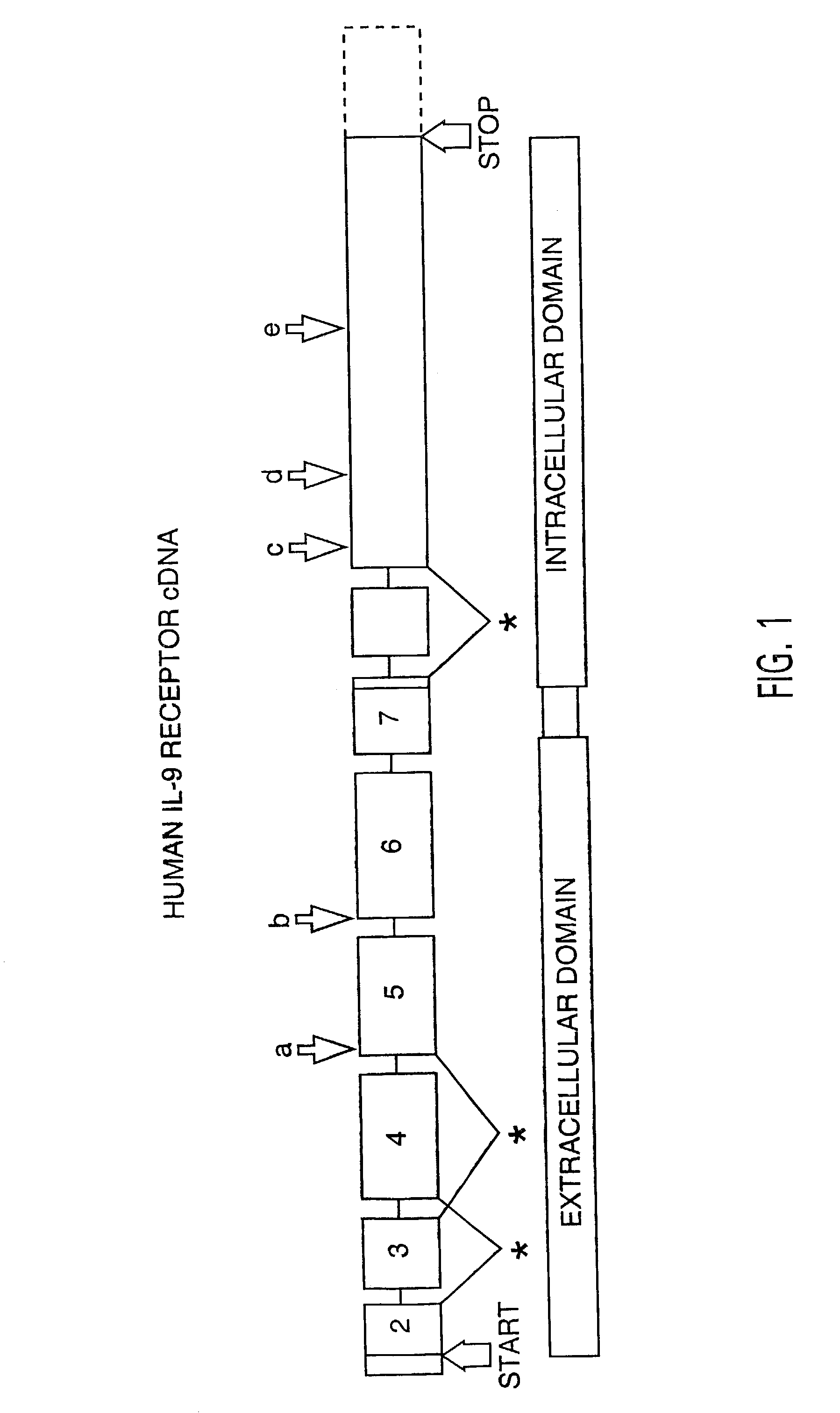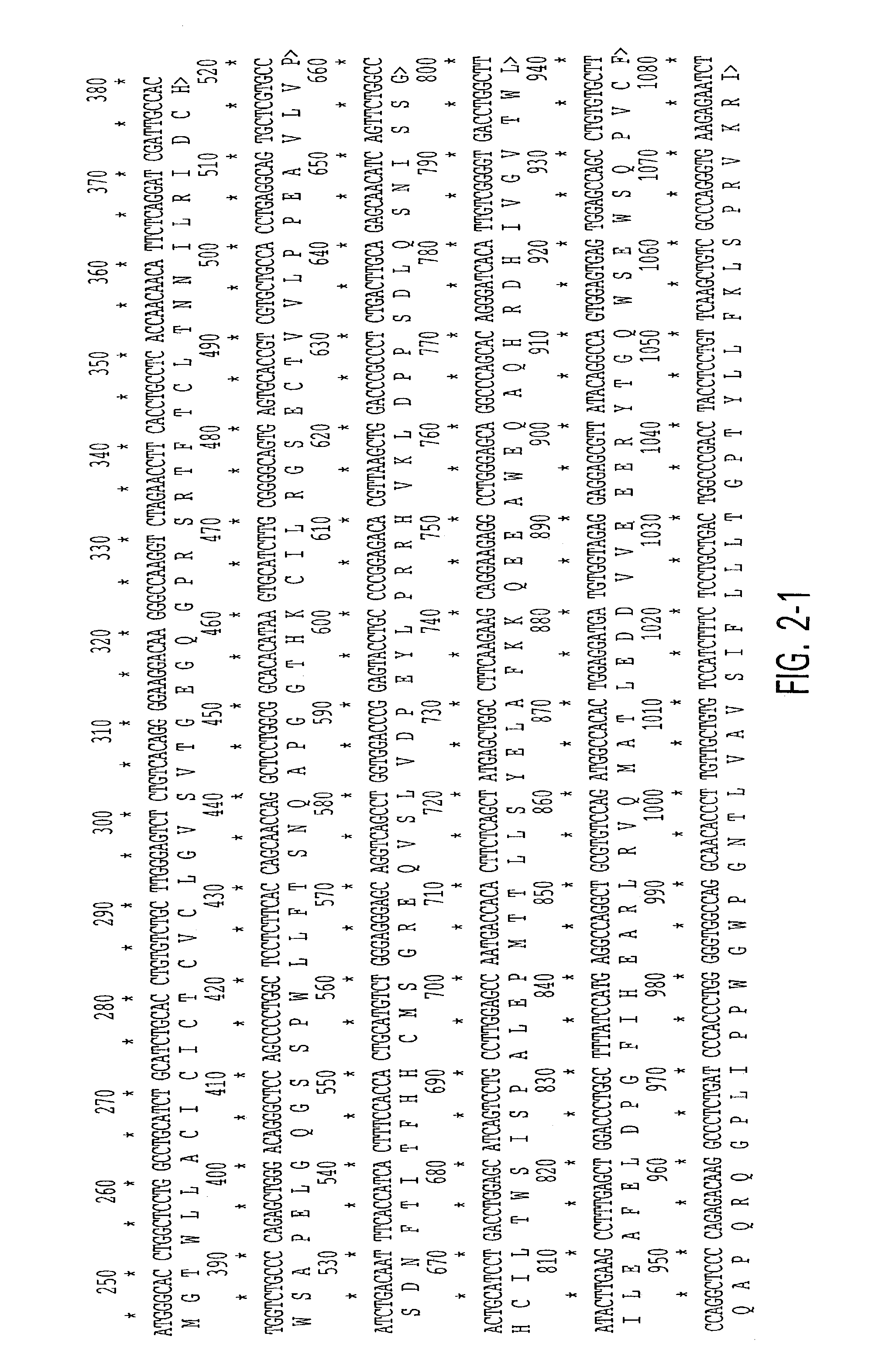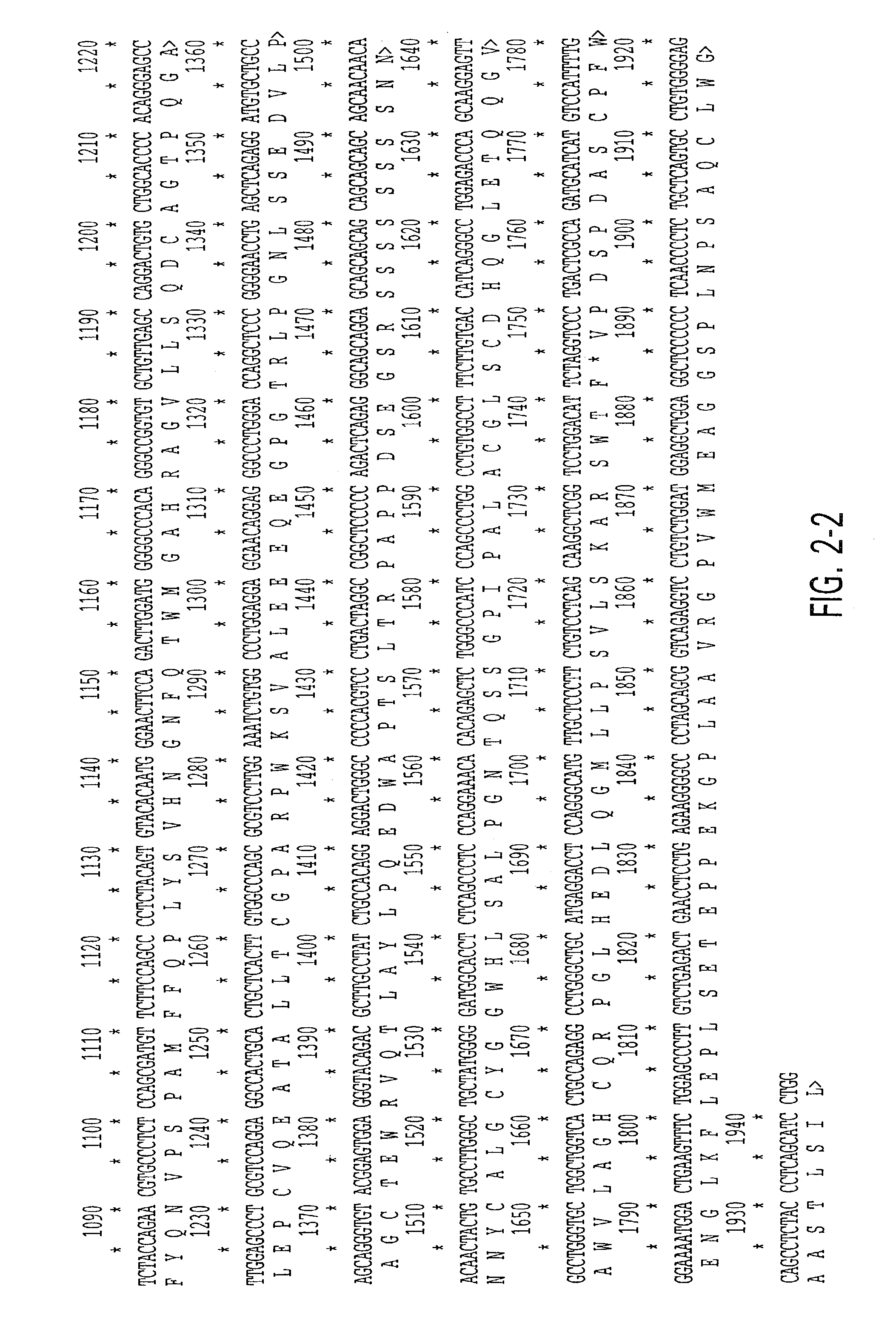Nucleic acids encoding interleukin-9 receptor variants
a technology of interleukin-9 and variants, applied in the field of biological variability, can solve the problems of affecting the treatment of these disorders, affecting the quality of life of patients, and putting an enormous burden on health care resources
- Summary
- Abstract
- Description
- Claims
- Application Information
AI Technical Summary
Benefits of technology
Problems solved by technology
Method used
Image
Examples
example 1
Identification of IL-9 Receptor Transcript Polymorphisms
[0097]A population of 52 individuals was ascertained randomly with respect to asthma and atopy from the Philadelphia, Pa., area. Total serum IgE were assayed by enzyme-linked immunosorbent assay (ELISA, Genzyme, Cambridge, Mass.).
[0098]To assess the structural forms of the human IL-9 receptor cDNA, PBMCs from these 52 unrelated donors were isolated and cultured in the presence of PHA and PMA (described in Example 4). Previous data from applicants' laboratory demonstrated the kinetics of expression for IL-9 receptor message in primary cultures peak at day 6 after mitogen stimulation. Applicants cultured the cells, therefore, for 6 days at which time the cells were harvested and their RNA and DNA were isolated as described in Example 5.
[0099]RNAs were reverse transcribed and amplified by PCR using primers specific for full-length IL-9 receptor cDNA as described in Example 5. Amplification products from each individual were cloned...
example 2
Genomic Analysis of the IL-9 Receptor Genes.
[0104]In order to perform genomic analyses of allergic and / or asthmatic individuals, the following strategy was designed to create PCR-specific primers for the authentic IL-9 receptor genes located on the X / Y pseudoautosomal regions and exclude the highly conserved IL-9 receptor pseudogenes located on chromosomes 9, 10, 16, and 18. First, sequence alignments were preformed between the two published pseudogenes and the genomic sequence of the IL-9 receptor genes. Primers were then initially designed in divergent regions between the authentic genes and the pseudogenes, and then analyzed by PCR using single chromosome-specific hybrids derived from Coreill DNA Repository (Camden, N.J.). If the primers only produce correct sized products from X and Y hybrids, they were then optimized for robust amplification. In several cases, primers directed to the divergent regions were not XY specific; therefore, applicants introduced additional base change...
example 3
IL-9 Receptor Expression and Ligand Binding Assay
[0107]Purified recombinant IL-9 and compounds potentially resembling IL-9 in structure or function are fluorescently labeled to high specific activity by using commercially available techniques according to the supplier's recommendations (Pierce). Human Mo7e and murine 32D cells are grown and resuspended at 37° C. in 0.8 ml of Dulbecco's modified Eagle's medium supplemented with 10% (vol / vol) fetal bovine serum, 50 mM 2-mercaptoethanol, 0.55 mM L-arginine, 0.24 mM L-asparagine, and 1.25 mM L-glutamine or RPMI supplemented with 10% (vol / vol) fetal bovine serum, 50 mM 2-mercaptoethanol, 0.55 mM L-arginine, 0.24 mM L-asparagine, and 1.25 mM L-glutamine, respectively. TF1.1 (TF1 cells lacking human IL-9 receptors), T98G, TK, and murine 32D cells, (Examples 7 and 10) were used as is or after transfection with the human IL-9 receptor constructs as described below. Plasmid DNA containing one of the full-length or truncated forms of IL-9 rece...
PUM
| Property | Measurement | Unit |
|---|---|---|
| time | aaaaa | aaaaa |
| concentration | aaaaa | aaaaa |
| pH | aaaaa | aaaaa |
Abstract
Description
Claims
Application Information
 Login to View More
Login to View More - R&D
- Intellectual Property
- Life Sciences
- Materials
- Tech Scout
- Unparalleled Data Quality
- Higher Quality Content
- 60% Fewer Hallucinations
Browse by: Latest US Patents, China's latest patents, Technical Efficacy Thesaurus, Application Domain, Technology Topic, Popular Technical Reports.
© 2025 PatSnap. All rights reserved.Legal|Privacy policy|Modern Slavery Act Transparency Statement|Sitemap|About US| Contact US: help@patsnap.com



